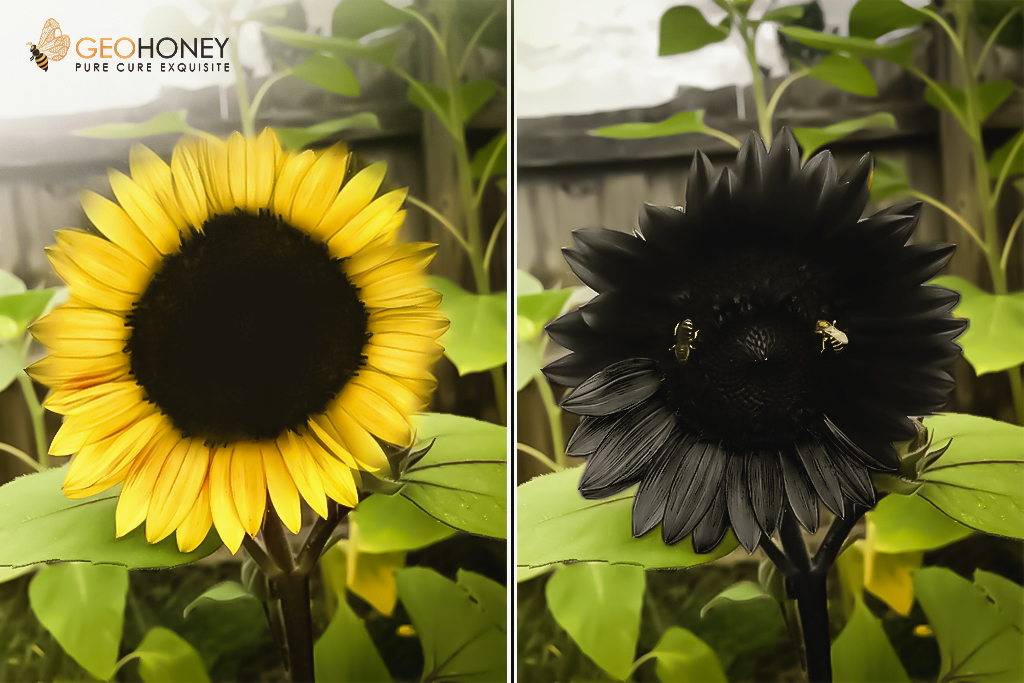- Tokyo: 19:15
- Singapore: 18:15
- Dubai: 14:15
- London: 10:15
- New York: 05:15
UV Patterns Of Sunflowers – Are They Important For The Bees?

Sunflowers are pretty appealing to the eyes and are known to evoke a feeling of positivity because of their bright yellow blooms. Standing taller than other garden blooms, sunflowers always perk up the moods. You may already have fallen in love with the bright, soothing color of these flowers, but did you ever know that these flowers' hidden colors attract pollinators and help retain moisture.
Sunflowers bloom excessively in late summer from southern Canada to northern Mexico regions. These flowers, which usually appear to us as uniform with bright yellow petals, actually have ultraviolet colors that are darker in the middle and lighter at the edges. As we are attracted to the bright yellow color of these flowers, bees and other pollinators usually get attracted to their ultraviolet colors.
As per the recent study published in eLife, these patterns of the sunflowers help them regulate water loss, potentially assisting them in adapting according to the environment. The size of this darker region in the middle of the sunflowers, often called bullseye, depends on a single gene.
Knowing the Importance of this Smart Evolutionary Adaptation of Sunflowers –
This single attribute of sunflowers' hidden colors is responsible for performing two main functions, first attracting the bees and second responding to climate change. These functions are essential for the plant to grow, survive and reproduce.
Being a member of the Asteraceae family, the Sunflower can survive in harsh conditions, including in hot, arid deserts and salt marshes. To understand more about this unique characteristic of sunflowers, researchers carried out a study on more than 1,900 individual sunflowers sourced initially from North America in the University of British Columbia's fields.
While taking UV pictures of the sunflowers understudy, they found that bullseye size varies from sunflower to sunflower. Some have small circles in the middle of the flower, while some have large bullseyes that take up the entire petal. Furthermore, the variety was not among species but also among individuals of similar species, suggesting to specialists that it could have developmental significance.
Researchers also thought about whether the bullseye containing UV-absorbing pigments might protect sunflowers from excess solar radiation. But this was not the case! No correlation has been found between the UV intensity of a sunflower's original geographical region and the average bullseye size.
The next thing to consider was temperature. Earlier it was suggested that the blossoms follow the sun to assimilate heat, which helps them grow and draws in pollinators. Maybe bigger bullseyes, with their overflow of UV-absorbing pigment, serve a comparative capacity by assisting with heating the blossoms, the group speculated. Yet, when the researchers thought about how much heat came from blossoms with bullseyes of various sizes, they tracked down no distinction at any point in the day.
Finally, large bullseye sunflowers are from drier environments, and bullseyes have something vital to do with moisture retention. Researching more on this topic, it was found that sunflowers in arid places have larger UV patterns and tend to lose water at a slower rate.
According to Mr. Basem Barry, founder & CEO of Geohoney, this research concluded that UV patterns play a double role in drawing in pollinators and assisting the sunflower with keeping up with the perfect proportion of moisture. The interchange between those pressures drives the wide variety found in nature.
As the researchers followed multiple strategies to understand the UV patterns of numerous sunflowers, it came out to be a unique story that helps us all know an interesting biological story and the science behind these beautiful flowers, and how it helps nature flourish.




Yes, UV patterns of sunflowers are essential for the honey bees because they help them regulate water loss & also potentially assist them in adapting according to the environment.